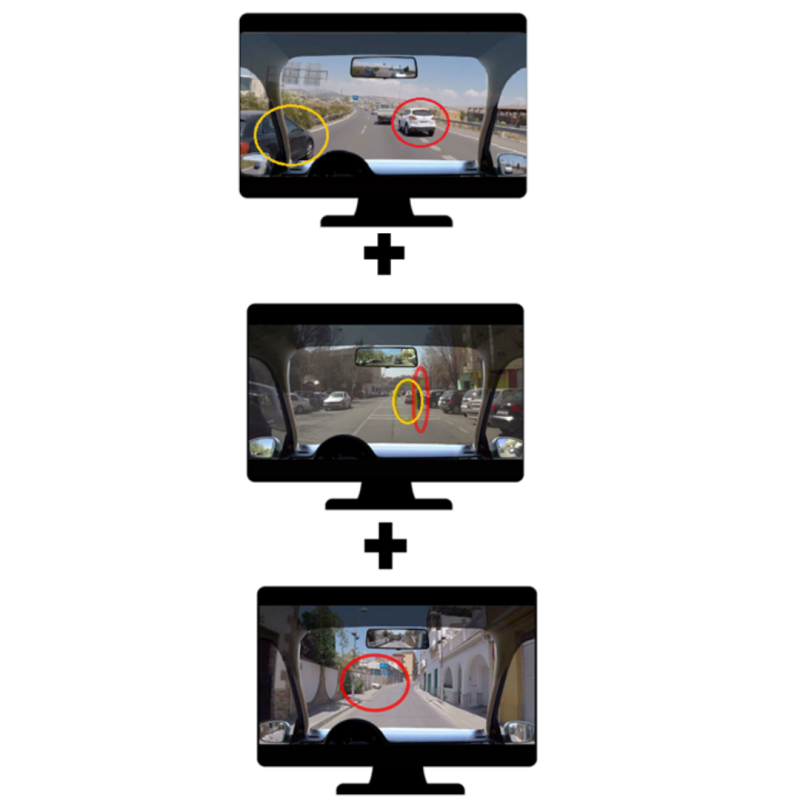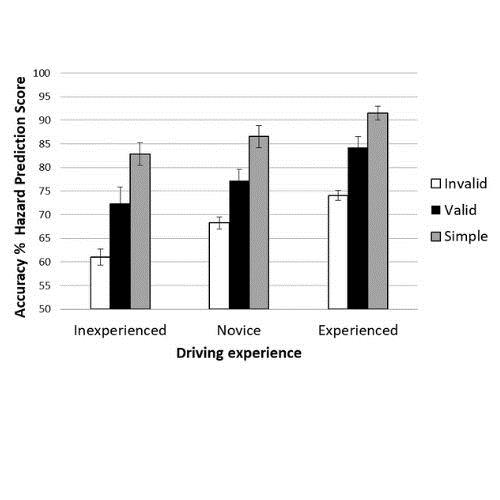
Visual attention in realistic driving situations: Attentional capture and hazard prediction
In the laboratory, when studying attentional orienting, both valid and invalid attentional cues are used: valid ones direct attention to a place where something relevant will occur. Invalids occur at a place where nothing relevant will happen. In general, performance improves when valid rather than invalid cues are presented. This work is novel because it explores the effects of attentional capture and driving experience in everyday situations while participants perform a hazard prediction task.
Ismael Muela, Ana B. Chica, Pedro García and Candida Castro, members of CIMCYC, have created new tests of Hazard Prediction (HPr) and Risk Estimation (RE) in driving by selecting 48 short videos recorded realistically from the perspective of a car driver. They created valid and invalid tests by selecting videos in which they were presented in the same spatial location where the hazard situation started to develop or in a different location. Simple situations were also presented, with a single hazard developing.
A total of 92 participants (30 experienced, 32 novice and 30 inexperienced drivers) placed themselves in the driver's perspective and answered the questions: 1) What will happen after the video cuts out? 2) How risky do you consider this situation to be?
The results of the hazard prediction test replicate the attention capture effect in complex driving situations, with invalid trials scoring the worst, followed by valid and simple trials. Experienced participants scored better than novices, and novices were better than inexperienced drivers. No interaction was found between attentional orientation and experience, suggesting the obligatory and automatic nature of orientation processes, which do not seem to be compensated for by driving experience. No significant differences were found for the Risk Estimation test which do not seem to be compensated by driving experience. No significant differences were found for the Risk Estimation test that do not seem to be compensated by driving experience (Figure 1). No significant differences were found for the Risk Estimation test.

Figure 1. Accuracy Percentage of the Hazard Prediction Score for the different orientation trials (invalid, valid and simple) and the different driving experience groups (inexperienced, novice drivers and experienced drivers). Standard Error bars are shown.
Contact:
- Ismael Muela Aguilera: @email
- Ana Belén Chica Martínez: @email
- Pedro García Fernández: @email
- Candida Castro Ramírez: @email
Full reference:
Muela I, Chica A, Garcia-Fernandez P, & Castro C. (2021). Visual attention in realistic driving situations: Attentional capture and Hazard Prediction. Applied Ergonomics, 89, 103235. DOI: 10.1016/j.apergo.2020.103235 ISSN: 0003-6870

